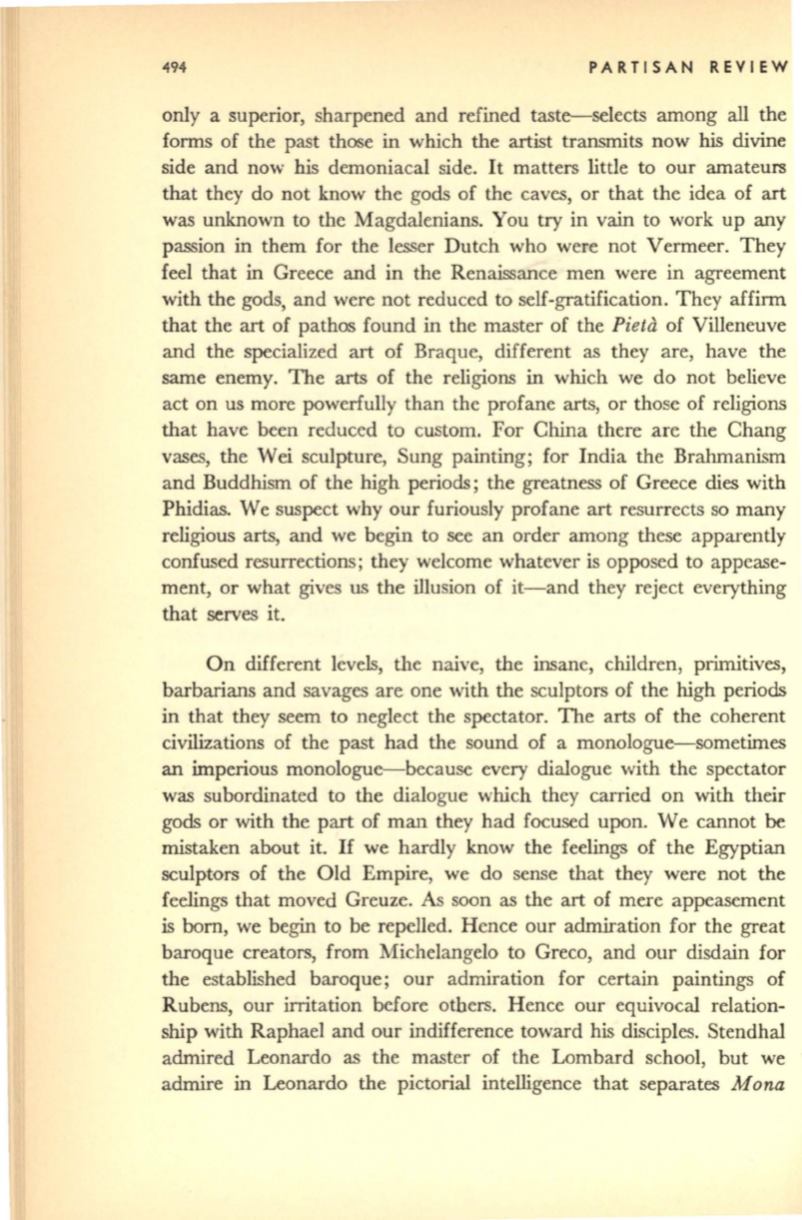
494
PARTISAN REVIEW
only a superior, sharpened and refined taste-selects among all the
forms of the past those in which the artist transmits now his divine
side and now his demoniacal side.
It
matters little to our amateurs
that they do not know the gods of the caves, or that the idea of art
was unknown to the Magdalenians. You try in vain to work up any
passion in them for the lesser Dutch who were not Vermeer. They
feel that in Greece and in the Renaissance men were in agreement
with the gods, and were not reduced to self-gratification. They affirm
that the art of pathos found in the master of the
Piela
of Villeneuve
and the specialized art of Braque, different as they are, have the
same enemy. The arts of the religions in which we do not believe
act on us more powerfully than the profane arts, or those of religions
that have been reduced to custom. For China there are the Chang
vases, the Wei sculpture, Sung painting; for India the Brahmanism
and Buddhism of the high periods; the greatness of Greece dies with
Phidias. We suspect why our furiously profane art resurrects so many
religious arts, and we begin to see an order among these apparently
confused resurrections; they welcome whatever is opposed to appease–
ment, or what gives us the illusion of it-and they reject everything
that serves it.
On different levels, the naive, the insane, children, pnrmtlVes,
barbarians and savages are one with the sculptors of the high periods
in that they seem to neglect the spectator. The arts of the coherent
civilizations of the past had the sound of a monologue-sometimes
an imperious monologue-because every dialogue with the spectator
was subordinated to the dialogue which they carried on with their
gods or with the part of man they had focused upon. We cannot
be
mistaken about it.
If
we hardly know the feelings of the Egyptian
sculptors of the Old Empire, we do sense that they were not the
feelings that moved Greuze. As soon as the art of mere appeasement
is born, we begin to be repelled. Hence our admiration for the great
baroque creators, from Michelangelo to Greco, and our disdain for
the established baroque; our admiration for certain paintings of
Rubens, our irritation before others. Hence our equivocal relation–
ship with Raphael and our indifference toward his disciples. Stendhal
admired Leonardo as the master of the Lombard school, but we
admire in Leonardo the pictorial intelligence that separates
Mona


